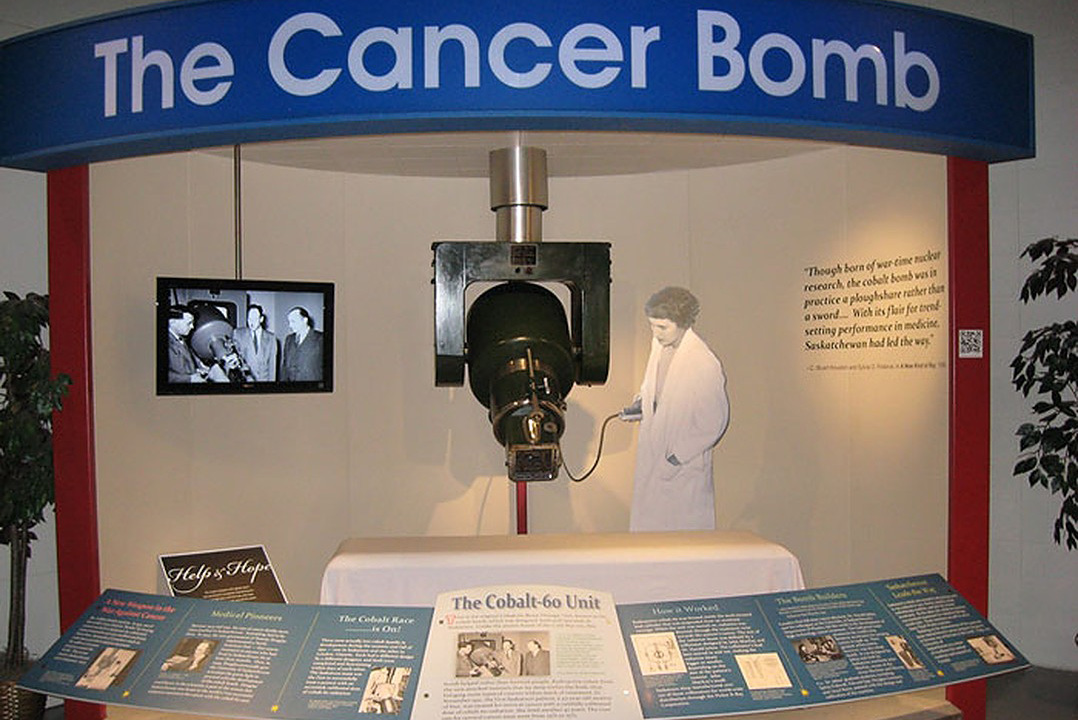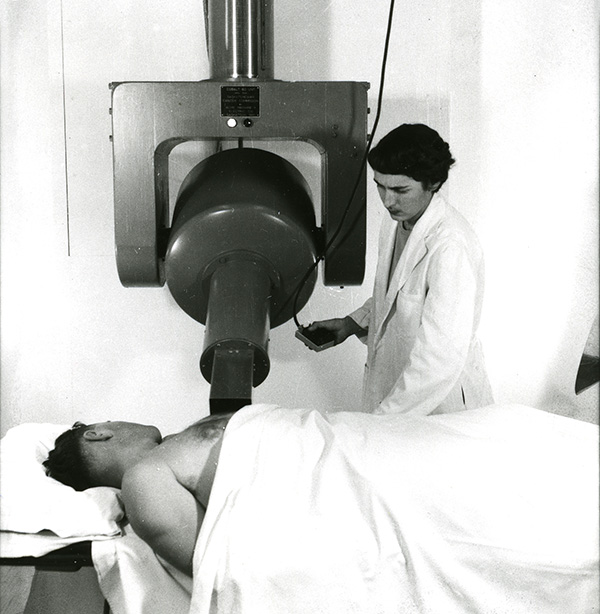
Uniquely USask: Cobalt-60 treatment at USask made medical history
Next year marks a special 70-year anniversary for the University of Saskatchewan (USask), when researchers made medical history on campus and began a tradition of world-leading innovation that continues to this day.
By James ShewagaTurn back time to 1951, when a team of remarkable researchers led Dr. Harold Johns (PhD) became the first in the world to build a cobalt-60 radiation therapy unit and the first to also successfully treat a cancer patient using the revolutionary treatment that would help save millions of lives around the world. That first cancer patient—a 43-year-old mother of four suffering from cervical cancer—would go on to live until the age of 90, with the original cobalt-60 unit used to treat 6,728 more patients over the next 21 years.

Johns’ original research team on the cobalt-60 unit—dubbed the “cobalt bomb” by members of the media—included graduate student Sylvia Fedoruk, a pioneering figure in medical science who would later become the university’s first female chancellor in 1986 and the province’s first female lieutenant-governor in 1988. Fedoruk conducted the calibration of the unit, an 11-week process to define the precise radiation depth-dose measurements to treat cancer tumours.
“It is just a wonderful story and I think it’s fulfilling to feel that I was around for the start of it all,” said Fedoruk, in an interview for Cobalt-60 at 60: The Legacy of Saskatchewan’s Innovative Cancer Treatment.
Fedoruk’s role in making medical history is also documented in the new biography, A Radiant Life, by USask historian Dr. Merle Massie (PhD).
The original cobalt-60 machine is now on a permanent display in Saskatoon’s Western Development Museum, a tribute to one of the first of many contributions the university has made to advancing medical research over the years.
“With its flair for trend-setting performance in medicine, Saskatchewan had led the way,” Fedoruk and Dr. Stuart Houston (MD) wrote in their 1995 book, A New Kind of Ray.
USask’s history of medical marvels helped lay the foundation for future innovation and research the world needs that continues today on campus at the Canadian Light Source (CLS) and the Sylvia Fedoruk Canadian Centre for Nuclear Innovation. The Fedoruk Centre oversees use of the university’s cyclotron—at the Saskatchewan Centre for Cyclotron Sciences—which produces medical isotopes for the province’s first PET-CT scanner that is used in cutting-edge cancer treatment. Meanwhile, the CLS—home to the country’s only synchrotron—employs a linear accelerator for research into producing medical isotopes for diagnosis and treatment.

